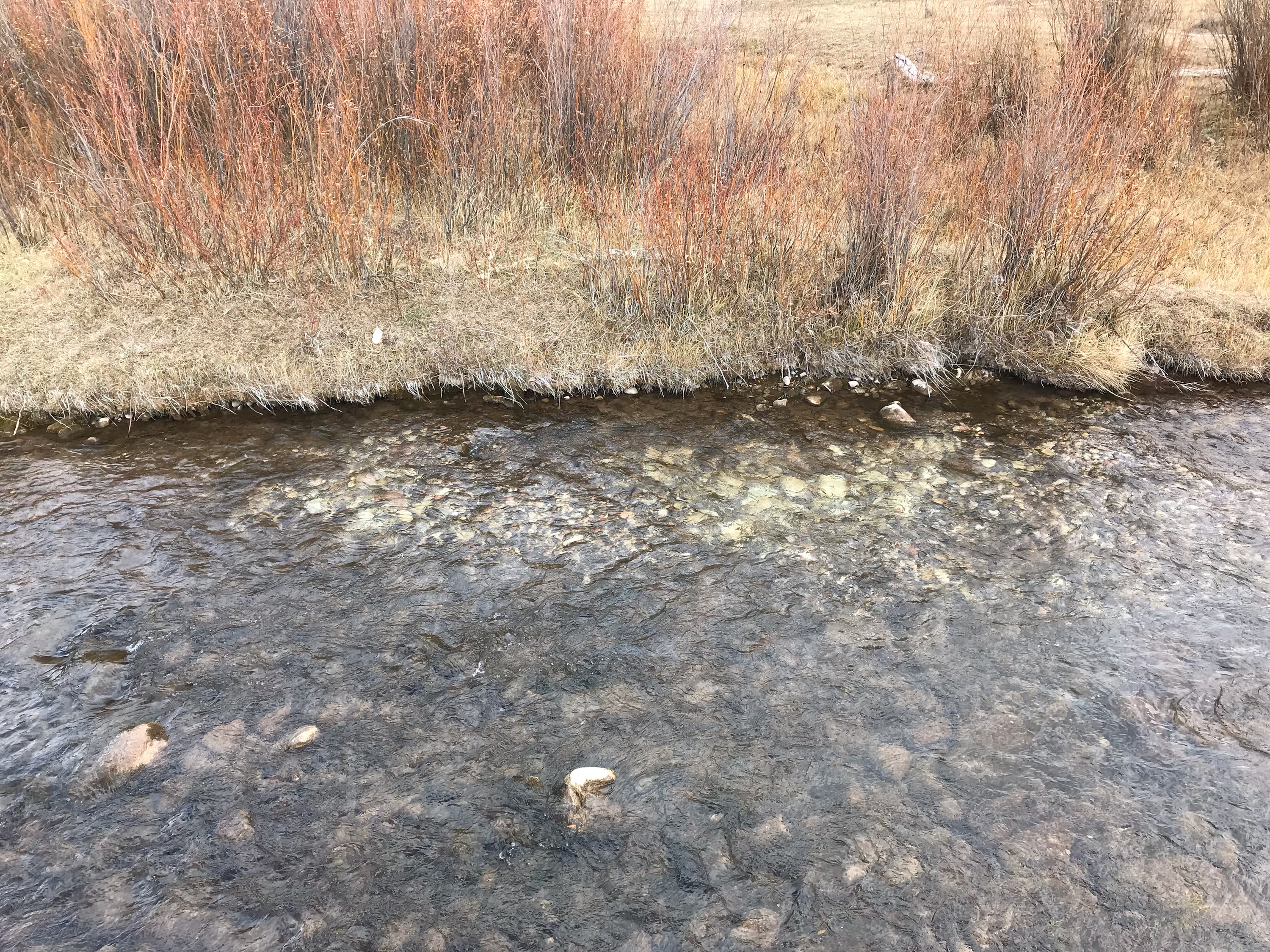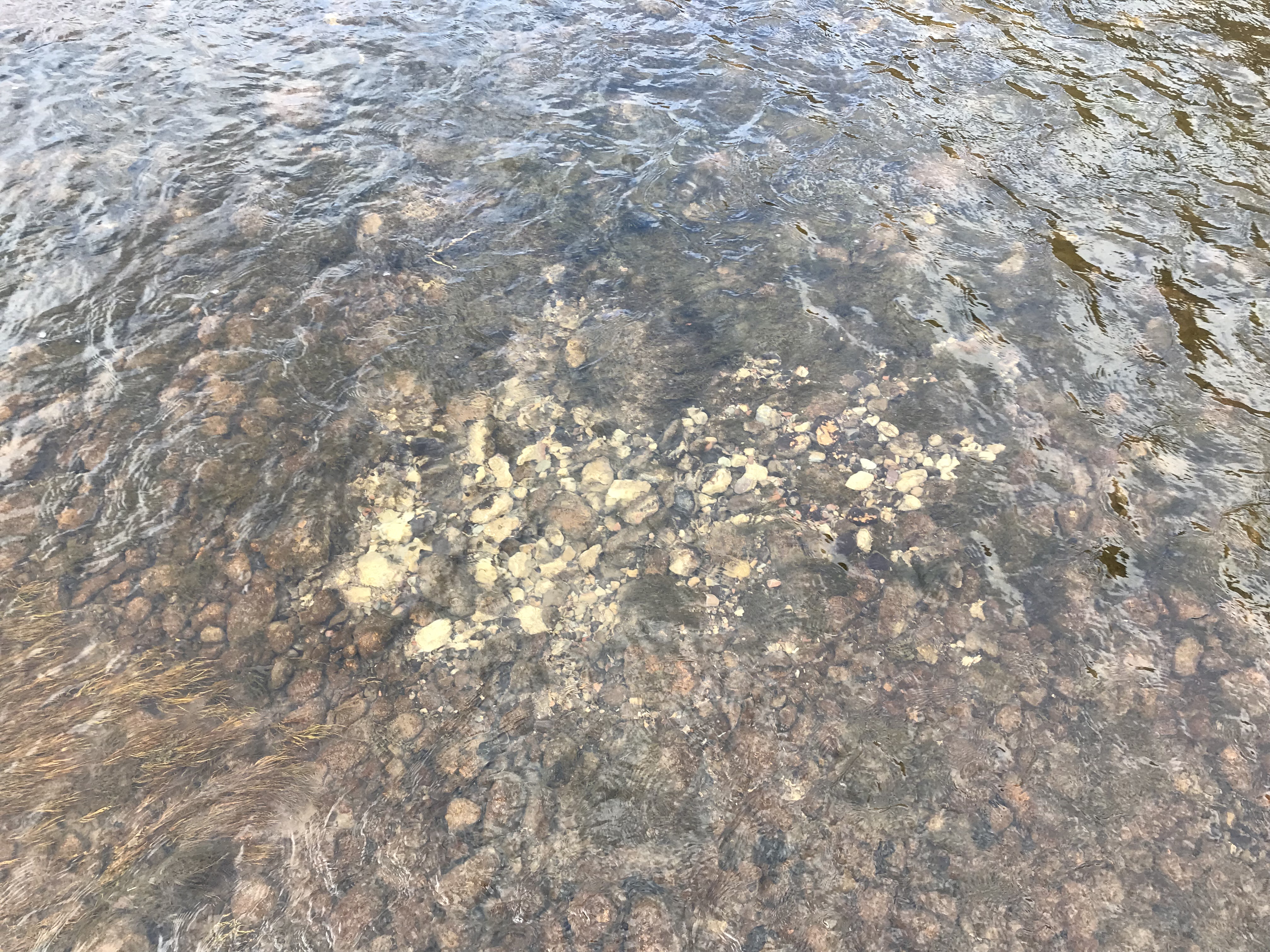Respect the Redd
Posted by Nick Teynor on Nov 10th 2018

(The white, cleaned off rocks indicate a redd.)
Photo by: Kigen Curtice
Fall is a beautiful time to fish; especially in Utah. The crowds of anglers are down, the fish are fat, the air is cool and crisp; all things that we at the shop look forward to-especially after the busy and hot summer months. Fall is also a time of reproduction. Our resident Brown Trout begin their spawning ritual, and are focused on making the next generation of trout for us [anglers] to fish to. This process is physically demanding on the fish; they literally use their bodies to clear out small depressions in the stream bed in which they lay their eggs. These depressions are called redds, and are usually built in shallow, fast moving riffles and the tail end of pools. Trout build redds here for two simple reasons: Oxygen, and Gravel Bottoms. The eggs they [trout] lay need a constant source of fast, silt-free water so their eggs will survive. This digging out a redd for their eggs strips the protective slime and even the skin of the fish from their bodies. This makes most, if not all spawning trout susceptible to parasites and infection. Not only are these fish working themselves literally to the bone to spawn, they also are aggressively vigilant and protective of their nests. Brown Trout, like many fish, will aggressively attack anything that ventures to close to the nest during the spawn.
Many anglers who target spawning fish think this aggression is a feeding behavior, but it is just the opposite. Spawning fish rarely eat. Instead, they focus their time and energy on digging redds (i.e. nests), keeping other fish from fertilizing their eggs, and protecting the eggs themselves from predation. In short: Spawning fish are incredibly distracted, which makes them less wary, and much more vulnerable to being caught. Some anglers view “The Spawn” as a great time to catch fish because of the fact they aren’t as wary; when in fact, we as an angling community need to protect these spawners and treat them and their nests with reverence and respect.
We depend on these larger, spawning fish to keep our fisheries full of fish; and pass on their “big fish DNA” to keep making big fish. A big, healthy fish can recover from being caught; but a spawning, stressed, starving, beat-up fish will most likely die. For the long- term health of the fishery, it is better for us as anglers to leave the spawning fish alone and watch out for the redds. Some of you might be wondering if it is possible to fish our brown trout fisheries without affecting the spawn, and the answer is yes!
There are plenty of lakes and reservoirs that have trout not spawning to fish to, and these fisheries are often devoid of anglers. The fall is also one of the best times of the year to fish our lakes and reservoirs from the bank. As water-temperatures cool, the fish that live within them move closer to the shore; looking for food right up till the reservoirs freeze. We at the shop really love chasing after voracious fall Cutthroat, Rainbow, and Tiger trout. The fish are large and healthy, and we can relax and enjoy our fishing without having to literally tip-toe around redds and spawning fish.
If you are going to fish rivers and streams this time of year, we at the shop just ask you to do it responsibly. Fish eggs, streamers, and everything else behind the redds in the deeper troughs, pools, and runs. Don't target the spawning fish; look for the fish in the deeper water far below the redds. Any fish that is not spawning will gather there looking to eat any eggs kicked off the nests above, and you run a much lower risk of interfering with spawning fish. Also, if you see that the river or stream flow is super low, don't fish it! Low flows stress fish out too; and add to that the stress of the spawn-you’ve got yourself some unhappy fish. Go where there is a good, steady flow of water. The fishing will be better there-trust me! If you don't know what is a good flow/bad flow for a river, creek or stream you would like to fish- then give us a call. That is what we are here for! These are very simple solutions to the complications of fishing in the fall. They will keep our fisheries healthy, and allow anglers time on the water. Also, just watch where you step. A couple of extra seconds watching were you step as you cross a stream won't kill you, and you’ll be potentially saving a fish that may one day grow into the “lunker” of your dreams!

(The white rocks highlight the location of the redd.)
Photo by: Kigen Curtice


